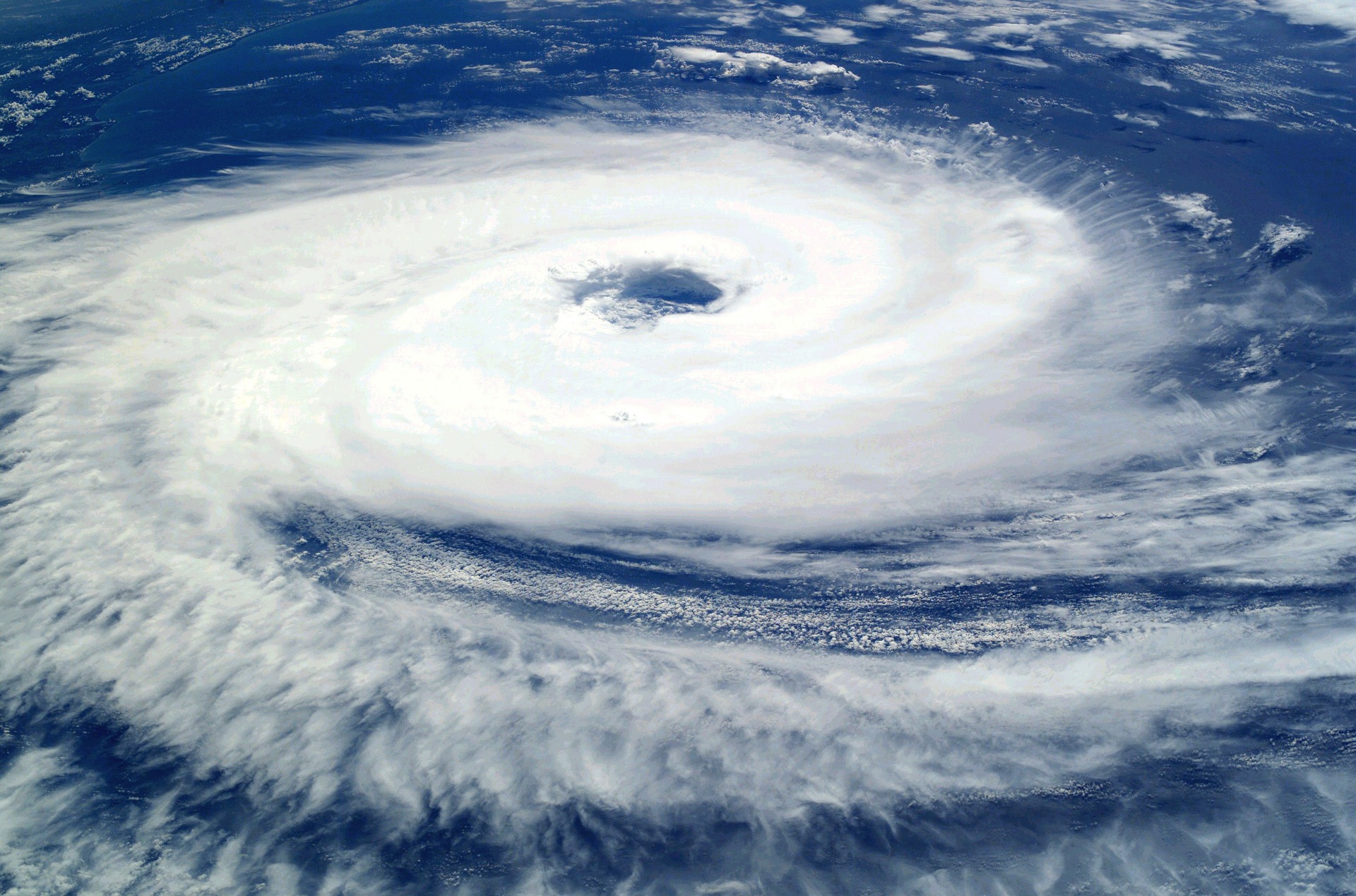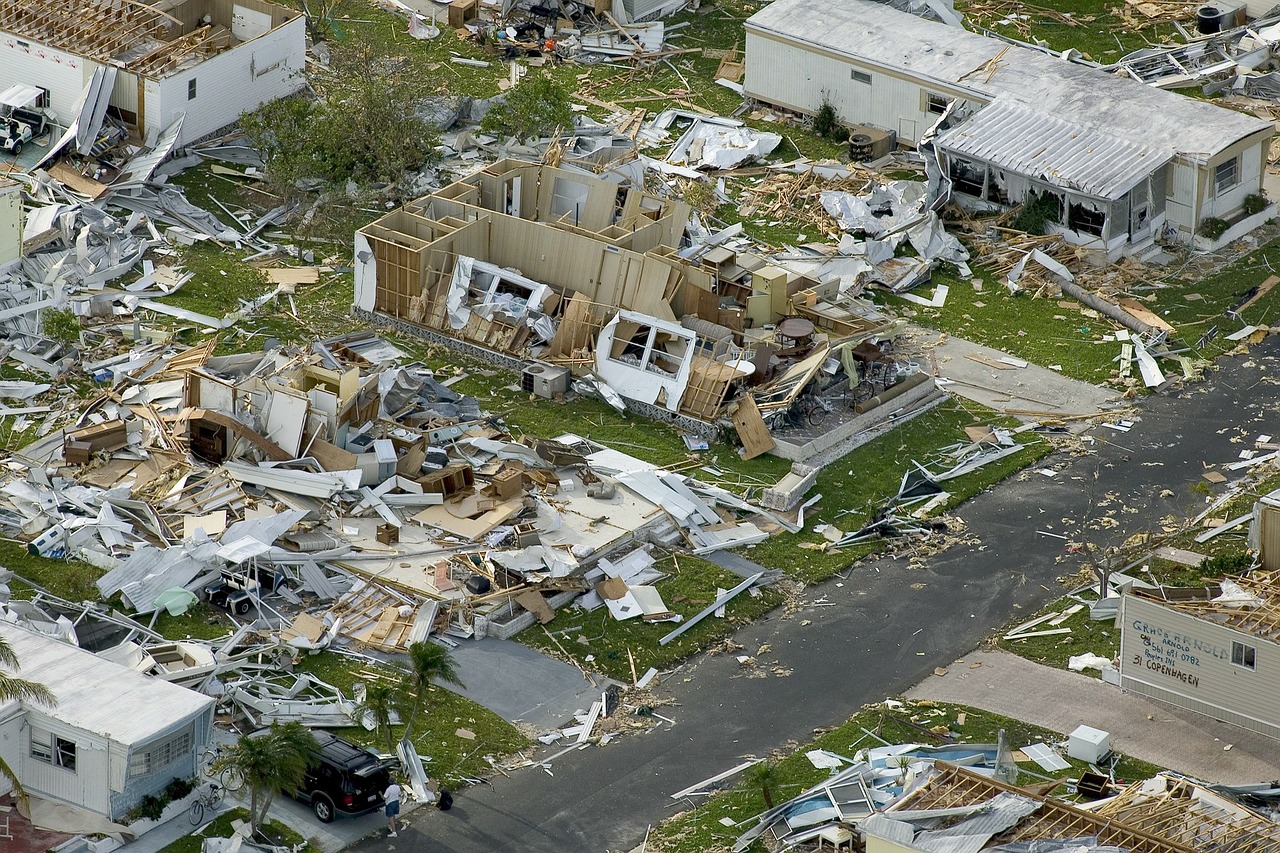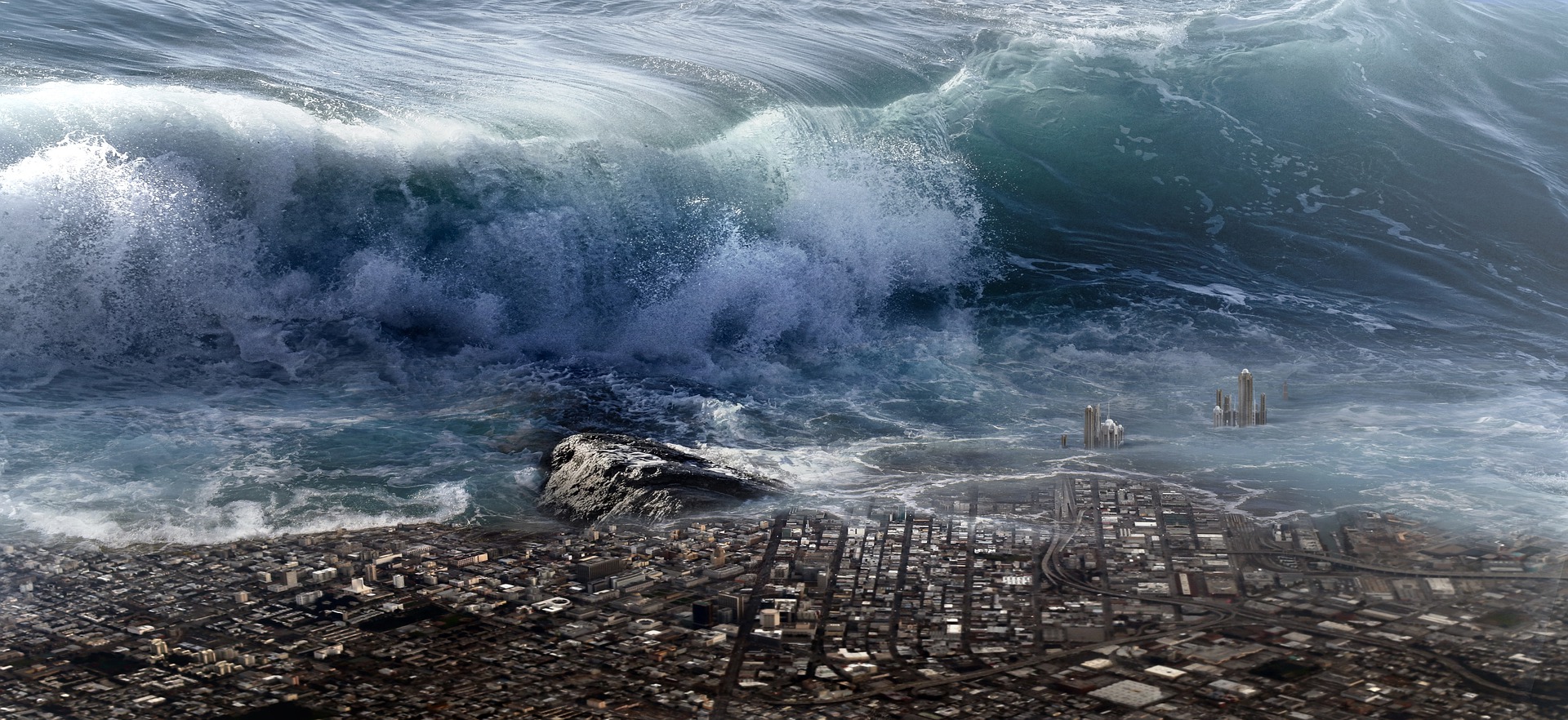Natural Disasters
have always occurred as a result of weather patterns. The magnitude and devastation that is currently happening, however, is a result of climate change. Increased greenhouse gases increase global temperatures, decrease equator to pole temperature differences, and increase humidity, causing more extreme climate. Higher temperatures increase the risk of drought, floods, and more intense storms because the precipitation is falling in a single large storm instead of a series of small storms. Higher temperatures mean more extreme temperatures, less cold weather and greater probability of record hot weather. The temperature difference between the poles and the equator will decrease. This difference fuels mid-latitude storms, where most of the Earth is populated. This will actually decrease the total amount of storms. Warmer temperatures increase water vapor creating more humidity. Water vapor fuels storms so more water vapor will create more intense storms. The higher heat and water in the atmosphere plus warmer sea surface will fuel hurricanes increasing wind speeds and possibly the distance from the Equator since the ocean is warming farther from the Equator. Glaciers melting will cause sea levels to rise making flooding more prevalent.

Effects
Food – Heat, droughts, floods and extreme weather affect farmers’ ability to produce food which affects all humans.
Infrastructure – Natural disasters cause loss of life and property, and cost a lot of money.
Public Health – After a natural disaster, when infrastructure is damaged, there may be no safe clean drinking water or safe disposal of human waste. There may be no or limited access to medical services and supplies or rescue services. There are also mental health consequences. All of these factors quickly lead to a health hazard.
Environment – Natural disasters can lead to long term consequences for ecosystems due to pollutants or waste being released.
Humanitarian Crisis – Natural disasters can cause a refugee crisis and population migration. By the end of the century, estimates put climate change refugees at 2 billion.

Facts
– More than 150 million people live on land that will be below sea level by the end of the century
– A quarter of the world’s population is threatened by growing storms and tsunamis
– According to Oxfam in 2017, there is an average of 400 extreme weather events per year
– According to Oxfam: “People in poorer countries are 5 times more likely to be displaced by extreme weather than people in rich countries….For Oxfam, this is an issue of justice: those living in poverty are the hardest hit by climate change despite being the least responsible for the crisis.” oxfam.org

Recent Events
July 9, 2019: Washington, flooding.
July 4, 2019: Anchorage, Alaska had never before seen 90 degree temps and seeing lots of wildfires, could not have fireworks this year since too warm.
June 2019 – The Food and Agriculture Organization (FAO) of the United Nations states that almost 9 million people in Ethiopia need humanitarian assistance due to drought. Several years of consecutive drought in the horn of Africa, as well as conflicts, have caused food and water shortage, animal food shortage, animal disease outbreaks, and unusual livestock movements in search of pastures. http://www.fao.org/emergencies/fao-in-action/stories/stories-detail/en/c/1199563/
September 2017 – Very powerful hurricane Irma devastated Haiti.
August 2017 – Unusually heavy monsoon rains and intense flooding occurred in South Asia.
August 2017 – Hurricane Harvey ties with Hurricane Katrina from 2005 as the costliest cyclone since both made landfall in the U.S.
Summer 2017 – India and Pakistan had a heat wave reaching 128.3 degrees F (53.3 degrees C) in Pakistan in May. The heat wave, named “Lucifer” also hit the Middle East and Southern Europe.
Summer 2015 –India and Pakistan had one of the deadliest heat waves ever. 3700 people died as a result.
